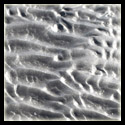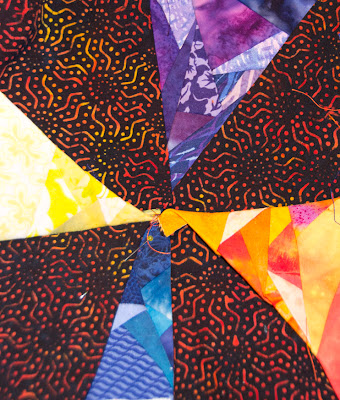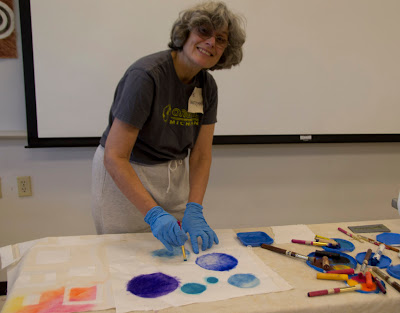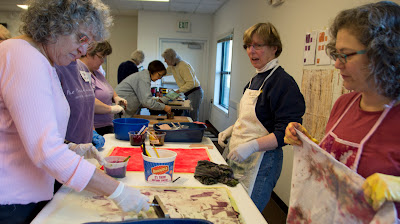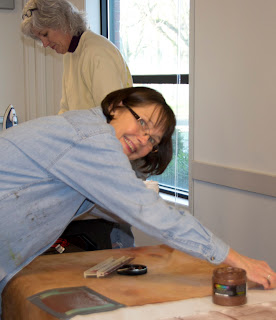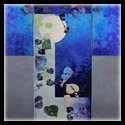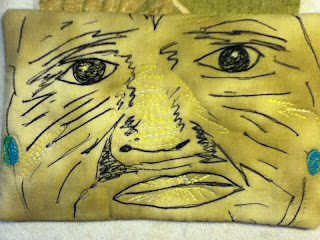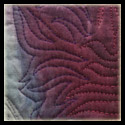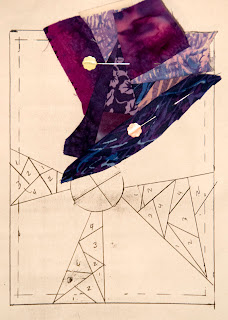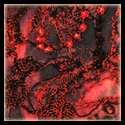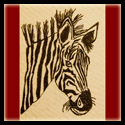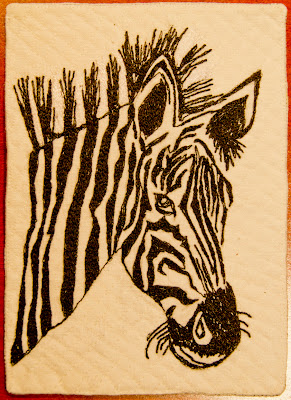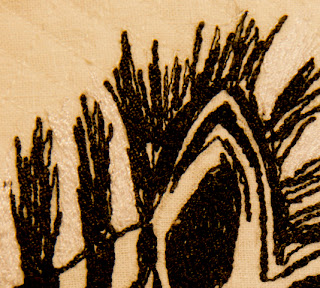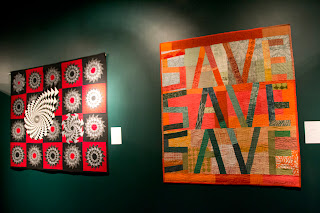You might want to start with a little history and look at Designing for a Theme: Innovation Part 1.
 |
| Artist rendition of Graphene molecules |
With the topic “Fiber Artists Look at Innovation and Civic Action”, I personally decided to narrow down possibilities by choosing to represent innovation. Since I’ve always enjoyed science, I started with looking at scientific journals and find out what some of the recent innovations have been that are expected to revolutionize areas of our lives. This is where I found out about Graphene.
Graphene, a form of carbon only one atom thick and in a hexagonal cellular structure, is both the thinnest and strongest substance now known to man. Scientists believe it will revolutionize technology from computer and mobile displays, medical devices, aerospace, desalination plants, electronics and countless ways which we cannot yet predict. Since I’m a technology fan and my husband’s business is in aerospace, this seemed like a good place to start. If you want to see a really cool futuristic video, check out this short YouTube “Future Applications of Graphene.”
So now I had a topic to try to represent to go along with the theme… but what could I do with it? I decided I wanted to represent both the uniqueness of the material (thin, lightweight, hexagonal cellular structure) as well as some of the possible applications of the technology.
Another little aspect that I had to keep in mind was the unusual gallery space that this piece would (hopefully) be hanging in. The walls were mostly all a deep dark forest green (with a hint of teal) and a couple that were a bright spring green. Not exactly easy to hang anything on, but ok if you’re specifically designing for the backdrop color.
My idea was to have a thin sheer layer cut in a hexagonal pattern that would fiat above the quilt, which would be surfaced designed to tell more of the story. I started the quilted layer with white Pima cotton. I bought some plasticized wire garden fencing that had hexagons as its design, and started with placing it on top of the white fabric and spritzed jacquard Textile Paint through it. This created a resist, with a painted background (in blues and greens) with a shadowy faint white hexagonal grid.
 |
Representation of a computer touch-screen made with a
thermofax silkscreen and hand-painted shading |
I then created several black and white images from photos (using Photoshop) of things that will have future applications using graphene. These included a commercial airplane, computer circuit boards, a smartphone, and a computer touchscreen. I then turned these images into silkscreens using a thermofax machine. I layered these different images around on the background, using Versatex print ink. I added some hand painting and when the paints were all dry, I finished the back/quilt with a diamond grid pattern for the quilting, as well as freemotion elements around each of the special elements.
 |
Silkscreened computer circuit board with gold metallic
thread freemotion quilted to look like metal elements. |
Now it was time to figure out how to represent the one-atom thick sheets of this hexagonal carbon molecule. I knew I wanted to have it be somewhat sheer (and black, since it is carbon, after all.) I thought that using a black organza might get the effect I wanted, so I bought some of each silk, rayon, nylon and polyester organza to test. I had a couple of different ideas on how to cut out a grid that wouldn’t ravel and could hold up, yet not be too terribly difficult or end up too uneven.
 |
Some of my samples testing different organzas and ways to
cut and make sure they wouldn’t fray |
The most consistent method and material turned out to be painting the nylon organza with matte medium, drying it, and cutting out the interior hexagons with small, sharp scissors. I’d been a bit surprised by this, thinking that a hot knife might cut and melt a synthetics edges at the same time, but it proved to be more difficult and harder to be exact than using my small Kai scissors. Also, I tried treating with different products with varying degrees of success. Some items made the organza too stiff (I wanted it still to be able to move in a breeze, to demonstrate the thinness of the graphene); others, like Fray Check, left a shiny plastic-like coating.
 |
Close-up of grommet, copper pipe
& bead hanging mechanism |
 |
| The organza hanging |
You can imagine the time it took me to cut out each of the little hexagons on the finished piece! The next step was to figure out how to affix the top layer so it would hang out separately from the quilted back piece. This turned out to be quite tricky. After many trials and errors, I was able to get a decent effect using some heavy-duty grommets, 1/8″ copper piping, copper wire, and beads.
Thankfully, my efforts were rewarded by the jury and my piece was accepted into the show! Here is the final piece, hanging at the Seattle Center Next 50 Exhibition! I particularly like how the hanging grid creates such interesting shadows with the gallery lighting. The only disappointment to me was that the show chair who mapped out where each piece was to go, choose to put my piece on one of the couple spring green walls, after I’d designed it to go on the dark green ones! Well, you can’t control everything!
 |
|
“Graphene: The Miracle Material” by Christina Fairley Erickson
Whole-cloth 100% cotton background quilt hand-painted, silk-screened and machine quilted by artist. Upper layer nylon organza treated with matte medium and cut into hexagonal grid attached with copper pipe, copper wire, beads and metal fittings by artist.
|
You might also be interested in:
 Back to UFO Sunday, here is the UFO that has been on my wall without progress for 6 months. It’s a color progression with a contrasting curved piece through each block. Although I don’t normally do block-based quilts, I wanted to practice some simple curved piecing and started on these 8″ squares. I kind-of ran out of space on my design wall however and obviously haven’t finished up the curves in all the blocks I have up yet.
Back to UFO Sunday, here is the UFO that has been on my wall without progress for 6 months. It’s a color progression with a contrasting curved piece through each block. Although I don’t normally do block-based quilts, I wanted to practice some simple curved piecing and started on these 8″ squares. I kind-of ran out of space on my design wall however and obviously haven’t finished up the curves in all the blocks I have up yet. 

